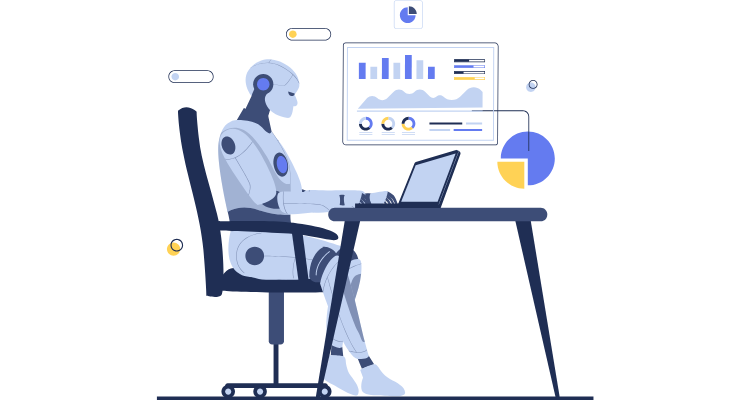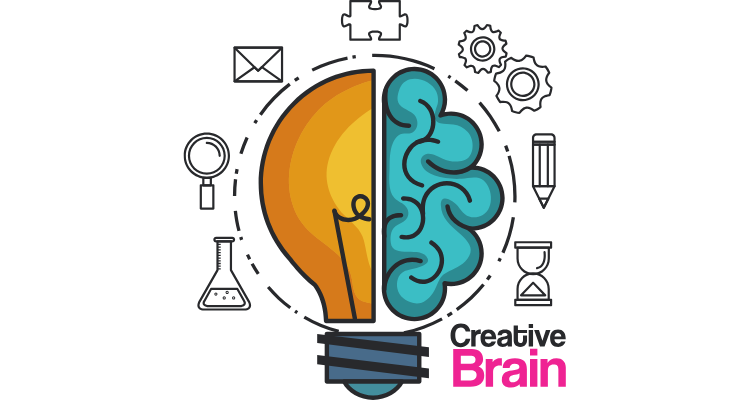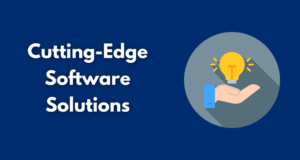The business world has never moved faster. While you’re reading this sentence, somewhere in the world, a startup is launching a product that could potentially reshape an entire industry. A new algorithm is being developed that might automate processes your company relies on. A customer behavior pattern is shifting that could make your current business model obsolete overnight.
This isn’t meant to create panic – it’s meant to highlight a fundamental truth: digital disruption has become the new normal. The companies that thrive in this environment aren’t necessarily the biggest or oldest; they’re the ones that have learned to anticipate change and adapt quickly.
The challenge isn’t just keeping up with technology anymore. It’s about building organizations that can pivot, evolve, and even benefit from the constant waves of change that define our digital era. The question isn’t whether disruption will affect your industry – it’s how prepared you’ll be when it does.
Table of Contents
ToggleUnderstanding the New Reality of Digital Disruption
Digital disruption has evolved far beyond simple technological upgrades. Today’s disruption involves fundamental shifts in how businesses operate, how customers behave, and how entire industries function. The pace of change has accelerated to a point where traditional business planning cycles can’t keep up.
Consider how rapidly artificial intelligence has transformed from a futuristic concept to a practical business tool. Companies that dismissed AI as “not relevant” to their industry just a few years ago are now scrambling to understand how it affects their competitive position. This acceleration isn’t slowing down – it’s intensifying.
The most successful organizations recognize that surviving in this environment requires more than reactive measures. They understand that developing a comprehensive strategy in the age of AI and digital disruption isn’t optional – it’s essential for long-term viability.
What makes current disruption particularly challenging is its interconnected nature. Changes in one area – whether it’s customer expectations, regulatory requirements, or technological capabilities – ripple through entire business ecosystems. Companies need strategies that address this complexity while maintaining operational efficiency.
Strategy 1: Embrace AI and Automation for Increased Efficiency

Artificial intelligence isn’t just changing how work gets done – it’s redefining what work needs to be done by humans. Companies that view AI as a threat to their workforce are missing the bigger picture. The real opportunity lies in leveraging AI to enhance human capabilities and free up resources for higher-value activities.
The key is approaching AI implementation strategically rather than reactively. Many businesses make the mistake of adopting AI tools without clear objectives or understanding of how these tools integrate with existing processes. This scattered approach often leads to disappointing results and wasted resources.
Smart organizations start by identifying specific areas where AI can deliver immediate value.
This might include:
- Automating routine data processing tasks that consume significant employee time
- Implementing predictive analytics to improve inventory management and demand forecasting
- Using AI-powered customer service tools to handle routine inquiries while humans focus on complex issues
- Deploying machine learning algorithms to identify patterns in customer behavior or operational inefficiencies
Professional AI strategy consulting can help businesses navigate this process by identifying the most promising AI applications for their specific industry and operational context. The goal isn’t to replace human judgment but to augment it with data-driven insights and automated execution of routine tasks.
Strategy 2: Foster a Culture of Innovation and Continuous Learning

Technology evolves rapidly, but organizational culture changes slowly. This disconnect creates one of the biggest barriers to digital transformation. Companies with rigid hierarchies and risk-averse cultures struggle to adapt to environments where experimentation and rapid iteration are essential.
Building an innovation-friendly culture starts with leadership’s commitment to change. This means creating safe spaces for experimentation where failure is viewed as a learning opportunity rather than a career-limiting mistake. It also means investing in continuous learning programs that help employees develop new skills as their roles evolve.
Successful organizations implement several key practices:
- Regular cross-functional collaboration sessions that break down silos and encourage knowledge sharing
- Dedicated time and resources for employees to explore new technologies and approaches
- Recognition and reward systems that celebrate innovative thinking and calculated risk-taking
- Leadership development programs that emphasize adaptability and change management skills
The most important aspect of cultural transformation is making it systematic rather than sporadic. Innovation can’t be a once-a-year initiative – it needs to be embedded in daily operations and decision-making processes.
Strategy 3: Invest in Data and Analytics for Smarter Decision-Making

In the digital age, data has become the foundation of competitive advantage. Companies that make decisions based on intuition and historical patterns are increasingly outmaneuvered by those that leverage real-time data and predictive analytics.
However, collecting data isn’t enough – the value lies in transforming data into actionable insights. This requires both technological infrastructure and analytical capabilities that many organizations lack. The goal is to create a data-driven decision-making culture where insights inform strategy at every level.
Effective data strategies focus on several key areas:
- Customer behavior analysis that reveals preferences, pain points, and emerging trends
- Operational efficiency metrics that identify bottlenecks and improvement opportunities
- Market intelligence that provides early warning signals about competitive threats or opportunities
- Financial performance indicators that enable more accurate forecasting and resource allocation
The challenge is avoiding data overload while ensuring decision-makers have access to relevant, timely information. This often requires investing in data visualization tools and training programs that help employees interpret and act on analytical insights.
Strategy 4: Build Flexible, Scalable Systems for Future Growth
Traditional business systems were designed for stability and predictability. Today’s environment demands systems that can adapt quickly to changing requirements while maintaining operational reliability. This shift requires rethinking fundamental approaches to technology infrastructure and business processes.
Flexibility starts with architecture decisions that prioritize modularity and interoperability. Instead of monolithic systems that require extensive customization for changes, successful companies invest in platforms that can integrate new capabilities without disrupting existing operations.
Cloud-based solutions play a crucial role in this flexibility, enabling organizations to scale resources up or down based on demand while accessing cutting-edge capabilities without massive capital investments. However, the real value comes from designing business processes that can accommodate rapid change.
Key considerations for building flexible systems include:
- API-first architecture that enables easy integration with new tools and platforms
- Automated deployment and testing processes that reduce the time and risk associated with system changes
- Scalable data storage and processing capabilities that can handle growth without performance degradation
- Security frameworks that protect against evolving threats while enabling innovation
The goal is to create an infrastructure foundation that supports experimentation and rapid deployment of new capabilities as market conditions change.
Strategy 5: Enhance Customer-Centricity Through Digital Transformation
Digital disruption fundamentally changes customer expectations and behaviors. Customers now expect personalized experiences, instant responses, and seamless interactions across multiple channels. Companies that fail to meet these expectations quickly lose market share to more agile competitors.
Customer-centricity in the digital age goes beyond traditional customer service improvements. It requires understanding how customers interact with digital touchpoints and designing experiences that anticipate their needs rather than simply responding to them.
This transformation typically involves several key initiatives:
- Omnichannel integration that provides consistent experiences across all customer touchpoints
- Personalization engines that tailor content, recommendations, and interactions based on individual customer data
- Real-time feedback mechanisms that enable rapid response to customer concerns or suggestions
- Self-service capabilities that empower customers to resolve issues and access information independently
The most successful digital transformation efforts focus on understanding customer journeys rather than optimizing individual touchpoints. This requires breaking down internal silos and creating cross-functional teams that can address customer needs holistically.
Implementing Your Future-Proofing Strategy
Successfully implementing these strategies requires careful coordination and realistic timelines. The temptation is to tackle everything simultaneously, but this often leads to resource strain and incomplete execution. Instead, successful organizations prioritize initiatives based on their potential impact and organizational readiness.
Start by conducting an honest assessment of your current capabilities and identifying the biggest gaps between where you are and where you need to be. This assessment should consider both technological infrastructure and organizational capacity for change.
Develop a phased implementation plan that builds momentum through early wins while working toward larger transformational goals. Each phase should deliver measurable value while setting the foundation for subsequent initiatives.
Measuring Success and Adapting Your Approach
Future-proofing isn’t a destination – it’s an ongoing process that requires continuous monitoring and adjustment. Establish clear metrics for each strategy and regularly assess progress against both internal goals and external benchmarks.
Key performance indicators should include both operational metrics (efficiency gains, cost reductions, customer satisfaction scores) and strategic indicators (market share, innovation pipeline, competitive positioning). The goal is to maintain visibility into both short-term execution and long-term strategic progress.
Be prepared to adjust your approach based on results and changing market conditions. The strategies that work today may need modification as new technologies emerge and customer behaviors evolve.
Conclusion: Thriving in the Age of Continuous Change
Digital disruption isn’t a temporary phenomenon that companies can wait out – it’s the new operating environment for business. The organizations that thrive in this environment are those that embrace change as an opportunity rather than viewing it as a threat.
The five strategies outlined here provide a comprehensive framework for building resilience and adaptability into your organization. However, the specific implementation will vary based on your industry, organizational culture, and competitive position.
The key insight is that future-proofing requires proactive rather than reactive approaches. Companies that wait for disruption to affect their industry directly often find themselves playing catch-up with competitors who anticipated change and prepared accordingly.
Success in this environment comes from building organizations that can learn, adapt, and evolve continuously. This means investing in people, processes, and technologies that enhance your ability to respond to change while maintaining operational excellence.
The companies that master this balance – those that can innovate rapidly while executing consistently – will be the ones that not only survive digital disruption but use it as a catalyst for growth and competitive advantage. The future belongs to organizations that view change not as something to fear, but as their greatest opportunity for differentiation and success.









